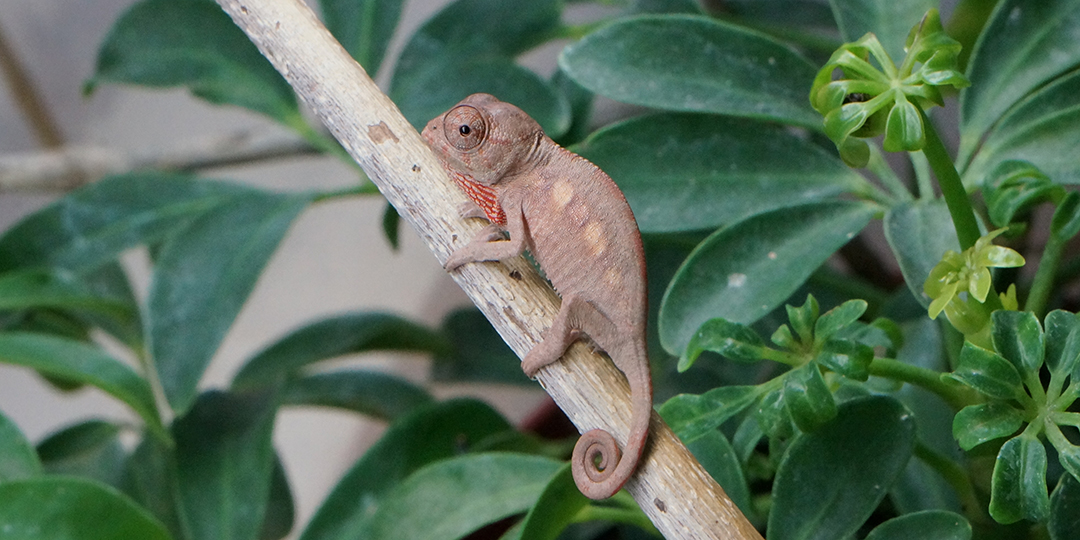
Baby Panther Chameleon Care: A Comprehensive Guide
Panther chameleons (Furcifer pardalis) are captivating reptiles native to the island of Madagascar. Their vibrant coloration, intricate patterns, and remarkable ability to change color make them popular pets among reptile enthusiasts. However, baby panther chameleons require specialized care to thrive in captivity. This comprehensive guide will provide you with all the essential information you need to ensure the well-being of your baby panther chameleon.
Housing
- Enclosure: Baby panther chameleons should be housed in a spacious enclosure that provides ample space for climbing and exploration. A minimum enclosure size of 18x18x24 inches is recommended for hatchlings, and larger enclosures should be provided as they grow.
- Ventilation: Proper ventilation is crucial to prevent respiratory issues. The enclosure should have mesh or screened sides to allow for adequate airflow.
- Lighting: Baby panther chameleons require both UVB and UVA lighting to synthesize vitamin D3 and regulate their metabolism. UVB lighting should be provided for 10-12 hours per day, while UVA lighting can be provided for 24 hours per day.
- Temperature: Baby panther chameleons require a temperature gradient within their enclosure. The basking spot should be around 85-90°F (29-32°C), while the cooler end should be around 75-80°F (24-27°C).
- Humidity: Baby panther chameleons require high humidity levels of 60-80%. This can be achieved by misting the enclosure several times a day or using a humidifier.
Diet
- Live Insects: Baby panther chameleons are primarily insectivores and should be fed a variety of live insects. Suitable prey items include crickets, dubia roaches, mealworms, and waxworms.
- Gut Loading: Before feeding insects to your chameleon, it is important to gut load them with nutritious foods such as leafy greens, fruits, and vegetables. This ensures that your chameleon receives essential vitamins and minerals.
- Supplements: Baby panther chameleons should be dusted with a calcium supplement three times a week and a multivitamin supplement once a week. This helps prevent metabolic bone disease and other health issues.
Hydration
- Water Source: Baby panther chameleons do not drink from standing water. Instead, they rely on water droplets that collect on leaves and other surfaces. Provide a variety of water sources, such as a dripper, misting system, or live plants with leaves that hold water droplets.
- Misting: Misting the enclosure several times a day helps maintain humidity levels and provides water droplets for your chameleon to drink.
Handling
- Frequency: Baby panther chameleons should be handled as little as possible. Excessive handling can stress them out and make them more susceptible to health issues.
- Technique: When handling your chameleon, support its body with one hand and gently cradle its head with the other. Avoid grabbing its tail or legs.
Health
- Common Health Issues: Baby panther chameleons are prone to certain health issues, such as metabolic bone disease, respiratory infections, and parasites. Regular veterinary checkups are essential to detect and treat any health problems early on.
- Signs of Illness: If your baby chameleon exhibits any unusual symptoms, such as lethargy, loss of appetite, or difficulty breathing, seek veterinary attention immediately.
Additional Care Tips
- Substrate: Use a substrate that retains moisture, such as coconut fiber or sphagnum moss.
- Plants: Live plants provide hiding places, climbing opportunities, and humidity.
- Socialization: Baby panther chameleons are solitary animals and should not be housed with other chameleons.
- Patience: Caring for a baby panther chameleon requires patience and dedication. It may take time for your chameleon to adjust to its new environment and develop a trusting relationship with you.
Conclusion
Baby panther chameleons are fascinating and rewarding pets that require specialized care to thrive in captivity. By providing them with an appropriate enclosure, diet, hydration, and handling, you can ensure their well-being and enjoy their captivating presence for many years to come. Remember to consult with a qualified veterinarian for any health concerns or specific care advice.
